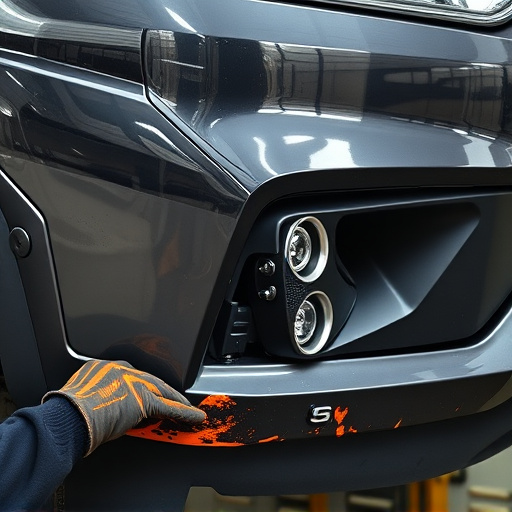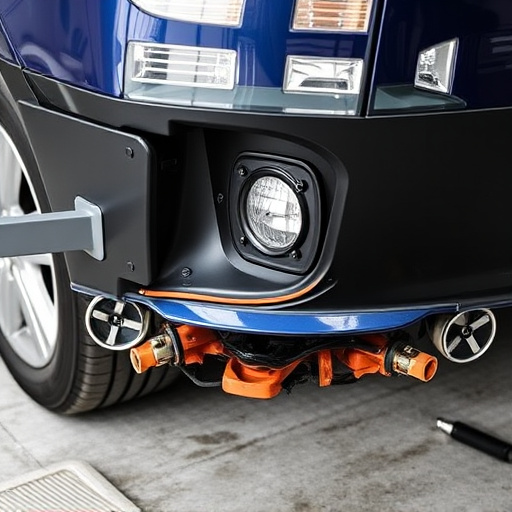Advanced Driver Assistance Systems (ADAS) in heavy-duty trucks reduce collisions by leveraging sensors and cameras to detect hazards. Features like forward collision warning, lane departure alert, and adaptive cruise control decrease human error, enhancing safety records, lowering insurance costs, and optimizing fuel consumption. Real-time fleet tracking with GPS monitors vehicles proactively, integrating automated emergency braking and tire services for minimal breakdowns. Autonomous trucks of the future promise further accident reduction, enhanced road safety, and comprehensive operational efficiency through seamless integration with emerging technologies.
Heavy-duty truck collisions pose significant risks and costs. However, cutting-edge technologies are transforming safety measures, aiming to reduce these incidents dramatically. This article explores three game-changing innovations: Advanced Driver Assistance Systems (ADAS), Real-Time Fleet Tracking, and Autonomous Vehicles. These technologies leverage data, sensors, and intelligence to enhance driver awareness, optimize routes, and eventually automate driving tasks, paving the way for safer heavy-duty trucking industries.
- Advanced Driver Assistance Systems: A Game Changer
- Real-Time Fleet Tracking: Preventing Collisions Proactively
- Autonomous Vehicles: The Future of Safe Hauling
Advanced Driver Assistance Systems: A Game Changer

Advanced Driver Assistance Systems (ADAS) are rapidly transforming the landscape of heavy-duty truck safety, acting as a game changer in reducing collision frequency. These innovative technologies employ sensors and cameras to detect potential hazards, providing drivers with real-time warnings and enhancing their overall awareness on the road. Features like forward collision warning, lane departure alert, and adaptive cruise control significantly mitigate human error, which is often a leading cause of heavy-duty truck accidents.
By integrating ADAS into their fleets, trucking companies can enjoy improved safety records and lower insurance costs. Moreover, these systems enable more efficient driving patterns, contributing to reduced fuel consumption and environmental impact. While dedicated body shop services for bumper repair might still be necessary following an accident, proactive measures taken by ADAS can minimize the frequency of such incidents, keeping both drivers and other road users safer.
Real-Time Fleet Tracking: Preventing Collisions Proactively

Real-time fleet tracking is a game-changer when it comes to heavy-duty truck safety. By utilizing advanced GPS technology, fleet managers can proactively monitor their vehicles’ locations and movements, enabling them to prevent potential collisions before they occur. This dynamic approach allows for immediate intervention when drivers veer off course or exceed safe speeds, ensuring that the entire fleet operates within predefined parameters.
Proactive collision prevention is particularly crucial in the logistics industry, where heavy-duty trucks often navigate through dense traffic and demanding terrain. Integrating real-time tracking with other safety features like automated emergency braking and lane departure warnings further reduces the risk of accidents. Moreover, regular tire services and maintenance checks, which can be efficiently scheduled based on vehicle location data, contribute to better road safety by minimizing unexpected breakdowns or blowouts that could lead to heavy-duty truck collisions.
Autonomous Vehicles: The Future of Safe Hauling

The future of heavy-duty trucking is looking increasingly autonomous. Advanced driver assistance systems (ADAS) are already making significant strides in preventing accidents and reducing heavy-duty truck collision frequency. These technologies, such as lane departure warnings, adaptive cruise control, and forward collision avoidance, act as the foundation for fully autonomous vehicles. As development progresses, self-driving trucks promise to revolutionize the industry by eliminating human error, which is a leading cause of accidents. With their precise navigation and constant vigilance, these vehicles have the potential to significantly lower insurance costs, minimize downtime due to vehicle damage (including hail damage repair), and enhance overall road safety for everyone sharing the roadways with them.
Autonomous vehicles don’t just offer improved safety; they also integrate seamlessly with other emerging technologies designed to optimize trucking operations. For instance, fleet managers can leverage real-time data from autonomous trucks to plan more efficient routes, monitor driver behavior, and predict maintenance needs, thereby reducing the risk of breakdowns and costly vehicle repairs at automotive body shops. This holistic approach to transportation efficiency and safety marks a new era in heavy-duty trucking, promising not just to prevent accidents but also to redefine the very concept of safe hauling.
The integration of advanced technologies is transforming the safety landscape for heavy-duty trucks, aiming to significantly reduce collision frequencies. From enhanced driver assistance systems to real-time fleet tracking and the burgeoning field of autonomous vehicles, these innovations offer proactive, data-driven solutions. As we look towards the future, autonomous technology promises to be a game-changer, potentially eliminating human error – a leading cause of heavy-duty truck collisions. By embracing these cutting-edge developments, the trucking industry can foster a safer, more efficient transportation network.














